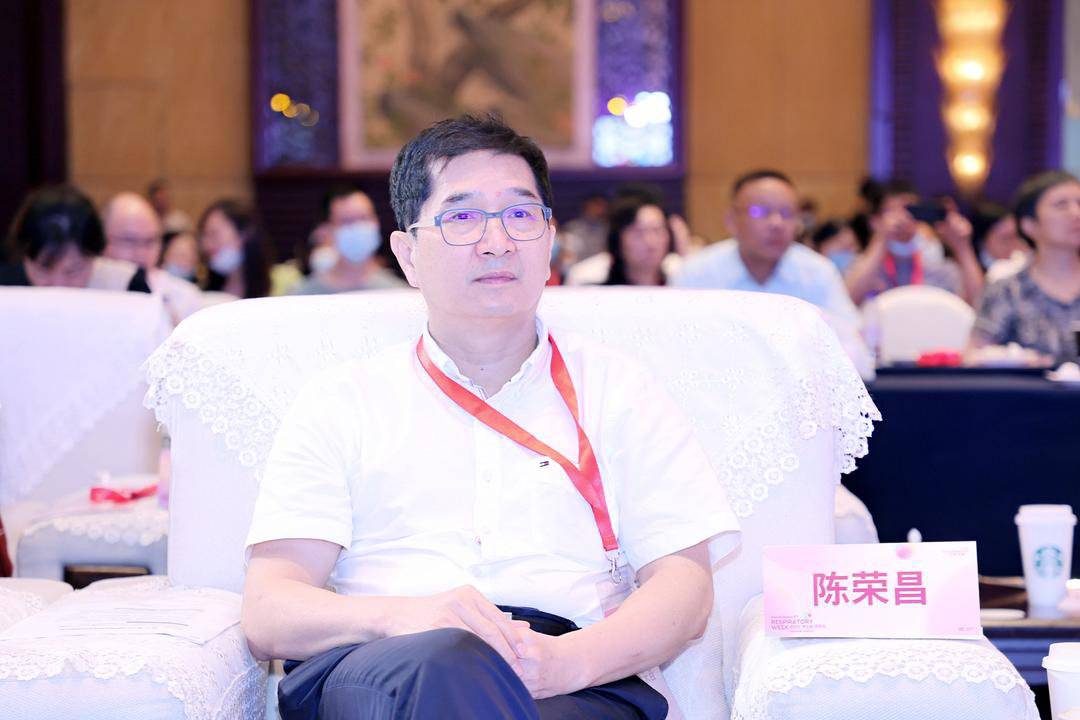Professor Wu Lin: From 5 real cases, the efficacy and safety of Savacinib in clinical practice
Author:Cancer Channel of the Medical Time:2022.09.01
*For medical professionals for reading reference

In August, MET excellent cases are essence ~
With the listing of the first high -selective MET inhibitors in China, China opened the first year of MET in China, breaking the predicament of "no medicine" in the past. In order to improve the clinic doctor's understanding of MET pathways and promote the standardized diagnosis and treatment of rare mutant tumors, the medical media media specially launched the "MET victory in Wo -rare mutant tumor MET inhibitors for the treatment of excellent case collection activities".
In August, a total of 5 outstanding cases were selected and published on the medical circles of the tumor channel. Provided by Professor Hu Xiaolong, the Second Affiliated Hospital of Anhui Medical University. In this regard, Professor Wu Lin, a "medical community" invited Hunan Cancer Hospital/Zhongnan University Xiangya Medical College Affiliated Cancer Hospital, summarized and commented on these cases to learn from clinical experience and promote MET standardized diagnosis and treatment.
Review of wonderful content
Case 1:69 -year -old female patients are diagnosed with hypotomaging adenocarcinoma in the left lung lobe and hypotomia, multiple lymph nodes metastasis, and multiple bone metastasis (CT2AN2M1C, IVB period), ECOG physical condition (PS) score is 3 points, gene test results show MET No. 14 outer slogan jump mutation and MET amplification, the immunohistochemical result is PD-L1 negative. Patients began to receive Sevotinib first -line treatment since December 2021. The symptoms gradually improved after treatment, and the lesions were significantly reduced. The recent review still maintained the stability of the disease (SD). (Click to view the full case)
Case 2:71, a male EGFR 21L858R mutation left lung adenocarcinoma with multiple lymph nodes (T3N2M0, IIIB) patients. Bevarzumab+full skull radiotherapy second -line treatment. After 6 months, the patient's lung lesions progressed, and genetic testing showed MET amplification. Patients were treated with Oshitinib+Kizibinib, but after two months, they found that the development of the lung lesions was progressing, so it was treated with Oshitinib+Savidininib. When the medication was used for 7 months, the efficacy evaluation showed that the lung lesions maintained SD, part of the post -peritoneal lesions were alleviated (PR), and intracranial lesions were PR. When the medication was used for 10 months, the efficacy evaluation was the overall PR. (Click to view the full case)
Case 3:53 women with advanced right lung adenocarcinoma patients, accompanied by right pulmonary, septum, dual -collarbone area lymph nodes metastasis, bone, liver, and brain multiple metastasis (CT2N3M1C, IVB period), EGFR 19DEL mutation. The first and second lines use Ekitinib and Oshitinib, respectively, and the three to six lines receive standard chemotherapy, antiovascular generic drugs and other treatment solutions. Both progress quickly. In October 2021, the patient performed a hydraulic digital PCR (DDPCR) gene detection. The results were displayed as MET amplification. The seventh line was treated with Savininib combined with Oshitinib. Tumor SD, PFS has reached 9 months. (Click to view the full case)
Case 4:60, female right lung non -small cell carcinoma accompanied by multiple metastasis (CT3NXM1, IV) patients, genetic testing found that after the Met 14 outer sub -jump mutations, the first -line treatment of Savidi was used to take effect quickly. Reached PR and continued to maintain PR, PFS reached 8 months. (Click to view the full case)
Case 5:77 years old left lung squamous carcinoma with patients with bone metastasis (CT3N3M1C IVB), genetic testing shows that MET14 outer appende jumps and mutations. After treatment with Saivininib 600mg QD, the patient's tumor was reduced by 42%, obtaining PR, and tolerable safety. At present, the patient has been taking medicine for nearly 10 months and has continued to benefit. (Click to view the full case)
Professor Wu Lin summarized the comment
With the development of molecular detection technology, more and more lung cancer -driven genes are discovered, and rare targets such as MET, RET, HER2 are gradually being well known. Although these rare targets are relatively rare, due to the huge bases of lung cancer in my country, there are many uncommon patients with rare target mutations. Fortunately, in recent years, the rapid development of new drugs has made rapid development, making various rare target mutations in non -small cell lung carcinoma (NSCLC) ushered in better treatment options.
With the heterogeneity and safety shown in the State Registration Study of II, in June 2021, Savacinib was approved in China to treat the NSCLC in the treatment of MET14, which became the first and the only obtaining in China in my country. The high -selective MET inhibitors approved to be listed have filled the gap in my country's MET targeted therapy. Since its listing for more than one year, Savidi has also lived up to expectations. It has also performed well in clinical practice and benefited a large number of patients with abnormal MET abnormalities.
In August 2022, a total of 5 excellent cases were released in the "MET victory in Wo" project. The MET abnormal types include MET14 outer Xianzi jump mutation, secondary meta expansion, and MET14 outer show jump mutant merger megue, organizational type of organizational type, organizational type Including pulmonary adenocarcinoma and lung squamous carcinoma, there are first -line treatment and ultra -rear line treatment, and some patients have a poor physical condition. Abnormal diagnosis and treatment have important reference significance. Patients of NSCLC should routinely detect MET abnormalities
The main types of MET abnormalities in NSCLC patients include MET14 outer sub -jump mutations, MET amplification, MET expression, meta fusion, etc. Among them, MET14 outer Xianzi jump mutations and MET amplification tests have received routine recommendations from domestic and foreign guidelines.
The 2022 Edition of the China Clinical Oncology Society (CSCO) NSCLC diagnosis and treatment guidelines [1] recommended, and the test of non -scale carcinoma tissue stages and stage IV patients in stage III and stage IV. Essence Therefore, it is recommended that patients with conditional patients in clinical screening as much as possible. Whether it is the first-generation/second-generation sequencing (NGS) or the reversal transcription-polymerase chain reaction (RT-PCR) technology, in the case of genetic testing can be available In the following, patients should confirm the genetic mutation as much as possible. In order to achieve the precision of medication and improve the treatment of patients.
In situ hybridization technology (FISH) is the gold standard that currently detects MET amplification, which can distinguish the fixed -point amplification and multiplied body. However, when the organizational specimen is inseparable, you can consider testing methods such as blood NGS and drip digital PCR (DDPCR). Secondary MET amplification is a common drug resistance mechanism for EGFR-TKI targeted therapy. It may also occur in ALK-TKI and RET-TKI for drug resistance. Therefore, patients with positive genes in clinical practice should be performed many times during treatment. Dynamic genetic testing, to achieve the purpose of accurate treatment and full management, extend the time of the patient's survival.
In addition, it should be pointed out that although the driving gene changes mostly occur in patients with pulmonary adenocarcinoma, they may also occur in patients with lung squamous carcinoma. The above case 5 is a patient with lung squamous carcinoma, but the tumor reduced tumor after the treatment of Met14, and the tumor was reduced by 42%after treatment after treatment. Previous studies have shown that the incidence of jumping mutations in MET14 is about 1%in patients with lung squamous carcinoma [2]. It can be seen that clinically, it should also pay attention to MET abnormal detection of patients with lung squamous carcinoma to prevent them from missing good opportunities for targeted therapy.
Overall, different detection methods have their own advantages and disadvantages. In clinical practice, clinicians can choose the appropriate detection method according to the specific conditions of the patient. At present, "The Consensus on Chinese Experts of Non -small Cell Cancer MET Clinical Test" is currently being written, and I am looking forward to the release of the consensus, so as to guide MET abnormal clinical testing and help clinicians regulate diagnosis and treatment.
Savatinib for different types of abnormal types of MET abnormal types is exact and good safety
The advent of high-selective MET-TKI has extended the survival time of MET abnormal NSCLC, which is undoubtedly the breakthrough progress made by MET abnormal treatment. As the only MET-TKI approved in my country, Savininib has a significant effect on the NSCLC NSCLC outside Met14. In Phase II Registration Study [3,4], the objective relief rate (ORR) treated with Savidinib was 49.2%, and the disease control rate (DCR) was 93.4%. In 6.9 months, the median total survival (MOS) reached 12.5 months. Aiming at the elderly, poor baseline conditions, lung sarcoma -like cancer (PSC), and brain metastasis, Savacinib also shows excellent anti -tumor activity.
It is worth mentioning that in addition to lung adenocarcinoma and PSC, 5%of the patients in the study are squamous carcinoma (4%squamous carcinoma, 1%gonadocyroma). In other words, regardless of the type of tissue, these patients can benefit from the treatment of Savidinib. The above case 4 and case 5 are NSCLC patients who have jumping and mutations of Met14, and Case 5 is lung squamous carcinoma. They are treated with Savininib for PR. Benefiting in patients.
In addition, the combined treatment of Savininib+Oshitinib can not only be used for the first/second-generation EGFR-TKI resistance, but also the only study for MET amplification after three generations of EGFR-TKI drug resistance. Project supported by evidence. TATTON research [5] results show that for patients with Osicinib to dystociate -resistant MET for NSCLC, the ORR treated with Oshitinib for 33%, MPFS is 5.5 months. The preliminary results of Savanah research recently released [6] showed that dual -target therapy showed a promising clinical effect in the people in MET high amplification/high than expression (IHC 90+ and/or FISH 10+). The mid -position relieving duration (DOR) is 9.3 months, and MPFS is 7.1 months.
The above case 2 and case 3 have been treated with three generations of EGFR-TKI before, and a secondary MET amplification resistance occurs. And continue to benefit. Especially for cases 3, the six -line treatment has been experienced before, and the situation is very complicated, but the treatment of Savinib+Oshitinib is still significant, and it is expected to bring patients to survival that exceeds expected. Case 1 is MET14 outer Xianzi jump mutation merged MET amplification. This situation is relatively rare in clinical practice, but some studies have found that about 8%-15%of NSCLC with MET No. 14 outer slum jump mutation accompanied by MET amplification, so It is also worthy of the attention of clinicians. Moreover, Case 1 has received PFS for about 9 months since receiving Savidi treatment, which also reminds Savininib's curative effect on different MET abnormal types.
Cizininini is resistant to use Savininib or feasible
Judging from the treatment process of case 2, after detecting MET amplification resistance, this case first chose Oshitinib+Kzizinib for treatment, but after 2 months PFS is only 2 months. After that, he was treated with Oshitinib+Savacinib and obtained PR. PFS has been more than 10 months. Therefore, another inspiration brought to the clinician is that if the EGFR-TKI drug-resistant NSCLC patients are used for the first use of Kizininib, then it is feasible to use Savidi after drug resistance. It may bring patients with lasting survival benefits.
In short, these cases provide valuable experience for the clinical MET precision diagnosis and treatment. I hope that with the continuous enrichment of evidence of evidence-based medical evidence and the accumulation of more clinical experience, MET-TKI can benefit more patients.
Expert Introduction
Director Wu Lin
Hunan Cancer Hospital/Central South University Xiangya Medical College Affiliated Cancer Hospital Director of the Internal Internal Internal Internal Division, Ph.D. in Internal Science, Chief Physician, and PhD instructor of Central South University.

Deputy Chairman and Secretary -General of CSWOG Lung Cancer Professional Committee, executive director of the Southern Tumor Clinical Research Association (CSWOG)
Member of the Expert Committee of the Cancer of the Cancer Branch of the Chinese Medical Association
Director of the China Clinical Oncology Society (CSCO)
Standing Committee of the China Anti -Cancer Association Clinical Chemotherapy Commission
Standing Committee Member of the CMUP Committee of China Anti -Cancer Association
Chairman of the Hunan Anti -Cancer Association Cancer Chemotherapy Professional Committee
Chairman of the Hunan Health Services Association Tumor Prevention Branch
Vice President of Hunan Medical Association Cancer Branch
Deputy Chairman of the Hunan Anti -Cancer Association targeted therapy professional committee
Deputy Chairman of the Hunan Anti -Cancer Association Lung Cancer Professional Committee
Deputy Chairman of the Hunan Anti -Cancer Association Cancer Precision Medicine Commission
references
[1] .2022 Edition of the China Clinical Oncology Society (CSCO) non -small cell lung cancer diagnosis and treatment guide.
[2].Lam VK, Tran HT, Banks KC, et al. Targeted tissue and cell-free tumor DNA sequencing of advanced lung squamous-cell carcinoma reveals clinically significant prevalence of actionable alterations. Clin Lung Cancer 2019; 20: 30–36 .e33.
[3].Lu S, Fang J, Li X, et al. Once-daily savolitinib in Chinese patients with pulmonary sarcomatoid carcinomas and other non-small-cell lung cancers harbouring MET exon 14 skipping alterations: a multicentre, single-arm, Open-Label, Phase 2 Study [J]. Lancet Respir Med. 2021; 9 (10): 1154-1164.
[4] .lu s et al. (2022) Final OS Results and Subgroup Analysis of Savolitinib in Patients withmetexon 14 Skipping Mutations (Metex14+) NSCLC. ELCC 2022, 2mo.
in EGFRM NSCLC POST-WCLC 2022. EP08.02-140.
*This article is only used to provide scientific information to medical people, and does not represent the viewpoint of this platform


- END -
Jining City held a press conference on the prevention and control of new crown pneumonia.
On the morning of September 2nd, Jining City held a press conference on the prevention and control of new crown pneumonia. The deputy mayor of the municipal government and a member of the party group,
How to use air conditioners in high temperature?What about the epidemic?For patients with patients with chronic respiratory diseases such as asthma, please check!

Cover Journalist Ning ZhiAt present, there are about 100 million patients with chr...